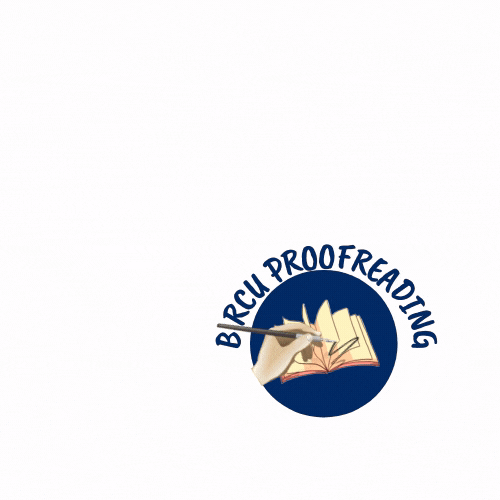Development of Learning Media Animaker Assistant Animation Videos on Materials of Count Operations on the Submission of Wholesale Number Class I SDN Jatiasih 2
Abstract
Technology developments require teachers to innovate their teaching method by utilizing the media of learning adjusted to the period. The study aims to test the feasibility of Animaker-assisted animated video learning media on the calculation of the addition of the whole number and to know first-grade students' responses to using this media. This study was held in Jatiasih 2 Public Elementary School. The method of this study was Research and Development (RnD) with the ADDIE model as development flow-through 5 stages. The technique of collecting data was using observation and questionnaires. The subject of the operated product validation test was conducted by three experts including a materials expert, a media expert, and a homeroom teacher. 25 first-grade students were trial samples to know students' responses. The results of product development showed an average percent score of 86% with very decent category according to materials expert's judgment, an average percentage score of 94% with very decent category according to media expert's judgment, and an average percentage score of 90% with very decent category according to the homeroom teacher's judgment. The students' response results showed an average percent score of 87% which was pronounced very positive and very decent results. Based on these data results, this study concluded that Animaker-assisted animated video learning media was very decent for the teaching and learning source on the calculation of the addition of the whole number for first-grade students of elementary school. This learning media was capable to create a new and fun vibe of learning.
Keywords
Full Text:
PDFReferences
Afwan, B. et al. (2020). The Development of Digital Flipbook Media Based on the 5 Hours Battle of Kalianda upon High School History Materials. Budapest International Research and Critics Institute-Journal (BIRCI-Journal). P. 1003-1012.
Aka, KA (2017). Utilization of Information and Communication Technology (ICT) as a Form of Learning Resources Innovation in Elementary Schools. Elementary School Education And Learning, 1 (2), 28–37. http://journal.um-surabaya.ac.id/index.php/pgsd/article/view/1041/724
Akbar, A., & Noviani, N. (2019). Challenges and Solutions in the Development of Educational Technology in Indonesia. Proceedings of the National Seminar on Postgraduate Education at Pgri Palembang University, 2 (1), 18–25.
Apriansyah, MR (2020). Development of Animation-Based Video Learning Media for Building Materials Science Course in the Building Engineering Education Study Program, Faculty of Engineering, State University of Jakarta. pencil Journal, 9 (1), 9–18. https://doi.org/10.21009/jpensil.v9i1.12905
Damayanti, PA, & Qohar, A. (2019). Development of Powerpoint-Based Interactive Mathematics Learning Media on Cone Material. Kreano, Journal of Creative-Innovative Mathematics, 10 (2), 119–124. https://doi.org/10.15294/kreano.v10i2.16814
Hanafi. (2017). R & D Research Concepts in the Field of Education. Scientific Islamica: Journal of Islamic Studies, 4 (2), 129–150.
Jannah, M., & Julianto, J. (2018). Development of Digestive System Animation Video Media to Improve Student Learning Outcomes of Science Subjects Class V. Research Journal of Elementary School Teacher Education, 6 (2), 254798.
Nawawi, I. (2019). Html 5-Based Mobile Learning in Islamic Religious Education Subjects. Journal of Perspectives, 3 (1), 15. https://doi.org/10.15575/jp.v3i1.38
Ningtyas, AM, Dewi, RS, Taufik, M., & Serang, K. (2021). Developing Animaker-Based Animation Videos On The Theme Of “My Living Area” At Grade IV SDN Banjasari 2 Serang. Primary , 10 (4), 739–748.
Optiana, N., & Muchlas. (2019). Development of an E-Portfolio-Based Assessment Guide Using Edmodo in Physics Practicum Learning for High Schools. Physics Education Research and Studies, 6 (2), 1–5. https://doi.org/10.12928/jrkpf.vxix.xxxx
Pratiwi, RIM, & Wiarta, IW (2021). Development of Interactive Multimedia Based on Indonesian Realistic Mathematics Education in Class II Elementary Mathematics Learning. Undiksha Edutech Journal , 9 (1), 85–94. https://doi.org/10.23887/jeu.v9i1.32220
Rohmah, N. (2021). Today's Learning Media: Applications for Making and Its Uses. PGMI, 4 (2), 127–132. http://ejournal.iai-tabah.ac.id/index.php/awaliyah/article/view/771
Surata, IK, Sudiana, IM, & Sudirgayasa, IG (2020). Meta-Analysis of Learning Media in Biology Learning. Journal of Education Technology , 4 (1), 22. https://doi.org/10.23887/jet.v4i1.24079
Yazid, M., Kudsiah, M., Apriana, D., & Sulastri, A. (2020). Learning Media Socialization for Elementary School/Madrasah Ibtidayah Teachers. 1 (1), 27–30.
Yuniastuti, Miftakhuddin, & Khoiron, M. (2021). Learning Media For Millennial Generation Theoretical Overview And Practical Guidelines. In Scopindo Media Pustaka (Vol. 000, Issue April).
DOI: https://doi.org/10.33258/birci.v5i3.5991
Article Metrics
Abstract view : 67 timesPDF - 57 times
Refbacks
- There are currently no refbacks.

This work is licensed under a Creative Commons Attribution-ShareAlike 4.0 International License.

This work is licensed under a Creative Commons Attribution-ShareAlike 4.0 International License.

_.gif)

















_.gif)



